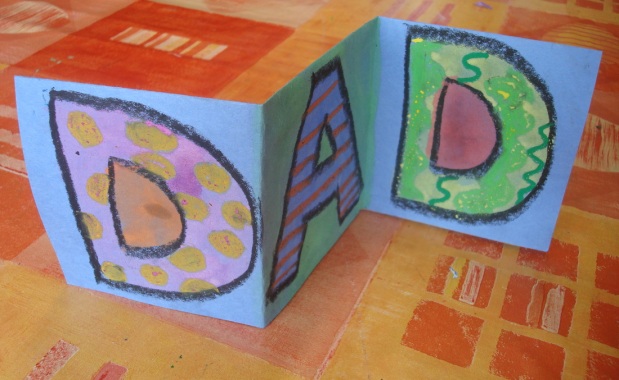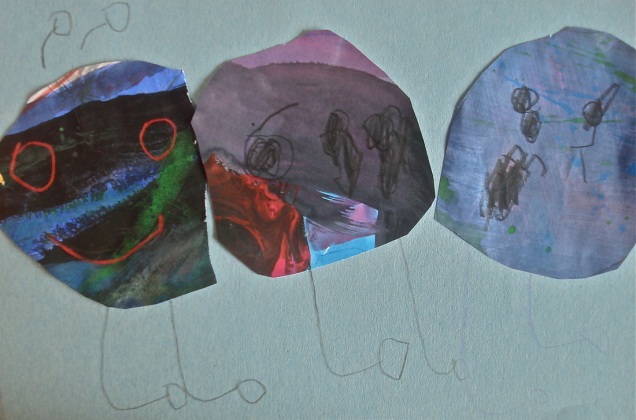I am so excited about this year’s final elementary pieces! I will be handing over the reins of elementary art to a new teacher next year, so these last moments with the students are precious.
We began this project looking at calendar images; describing the different parts of a landscape, including colours and textures. I had a few volunteers come up to the board to draw lines to show these different textures. Then we got busy painting (and stamping) paper to represent water, rocks, grass, flower fields…
A few lessons were spent painting paper before we had enough, I think we all enjoyed the process. Then we talked about assembling our landscapes in layers on a background paper. We talked about the different colours the sky could be (I ran out of the usual blue paper!) and what we could put in the foreground, middle ground and background. The students cut paper for each of these parts and glued down the pieces. I encouraged them to include additional shapes with paper- trees, rocks, clouds, sun…
A following lesson, we learned how to fold an origami house using two sizes of paper. To create a sense of perspective, we made larger houses to put in the foreground, and smaller ones for further back. We used pieces of foam behind to pop out these houses even more!
Once we had all of our main shapes, we added details. Out came the puffy paint (never thought I would go near this stuff, it has taken 5 years!) We practiced first on scrap paper, making dots, dashes, wavy and zigzag lines before moving onto embellish our landscapes.
The final step to make these arpilleras more textile-like: I had the students punch holes along two of the sides (some chose to go all the way around) and I demonstrated how to ‘sew’/wrap the edges in yarn to finish it off.
They are oh so lovely and colourful, and we learned many lessons along the way
Credit for this idea goes to the amazing Cassie Stephens




































